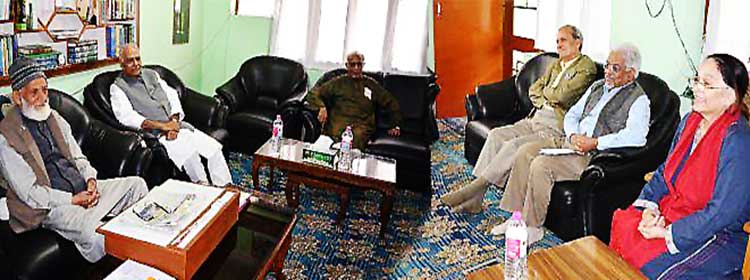Written by: Dr. Dushka H. Saiyid
Posted on: February 03, 2017 | 
Fighting for freedom with stones
“A de facto plebiscite already seems to have taken place there. Kashmiris appear to have voted with untiring throats, with eyes destroyed or deformed by pellets, and with bodies willing to fall to the ground for what the heart desires. And the vote seems to be for azadi.” This is what Rajmohan Gandhi, an academic and the grandson of Mahathma Gandhi wrote in the Economic Times on September 19, 2016. Independent researchers have cast serious doubts as to the legitimacy of Kashmir’s accession to India as that occurred only after the Indian armed forces had landed in Srinagar. The document of accession itself is missing from the archives. Since then, India has brazenly defied all UN resolutions calling for plebiscite in Kashmir
The killing of Burhan Wani in July 2016, the 22 year-old charismatic poster-boy of Hizbul Mujahideen (indigenous militant group), whose presence on social media had earned him a huge following, led to a widespread movement of the Kashmiri youth demanding azadi or freedom. This stone-pelting indigenous movement of the youth, who constitute 68% of the population, was mowed down by pellets; more than a thousand sustained eye injuries while 89 were killed, according to a BBC news report of 28 October, 2016.
A team of concerned citizens, led by Yashwant Sinha, a senior BJP leader and a former External Affairs Minister, led the delegation which visited Kashmir twice and published its report in January 2017. The Concerned Citizens Group besides Sinha, consisted of Wajahat Habibullah (former Chairman of National Minorities Commission), Air Vice Marshal (Retd.) Kapil Kak, Bharat Bhushan (Editor, CatchNews) and Sushobha Barve (Executive Program Director of Centre for Dialogue and Reconciliation-CDR) as members. The Sinha Report’s recommendations have challenged the decades old position of the Indian Establishment on Kashmir, declaring that the Kashmiris sees it as a political problem, requiring a political solution, while the Indian state is unable to view it outside the national security frame-work. The Report has advised dialogue with the All Parties Hurriyat Conference, Pakistan, and even Syed Salahuddin, the leader of Hizbul Mujahideen. More interestingly, the Report has advised against opposing the CPEC, as Kashmiris regard it as reviving of the old Silk Route.

The Report recommends improving the human rights situation, because the response of the youth to an attempt to maim and blind them into submission, has only led to their celebration of martyrdom. Kashmiris comment that the last great hope was Vajpayee’s suggestion that the Kashmir problem should be solved “within the ambit of humanity”, a point of view very alien to the present Indian government.
A doctor recalled to Al Jazeera his experiences in dealing with patients:
“I received a patient from Kupwara [North Kashmir]. He was hit in both eyes, and we put him on a table to work on him. I gave him a local anesthetic, and so he was very much aware of what was taking place. He asked me: 'Doctor, will I be able to see again?' I assessed the situation in both eyes. The injuries were very grievous, and so I kept silent. He understood, and it was heartbreaking. He said: ‘So I donate both my eyes to the people of Kashmir, particularly to those who can see, yet they are blind. I donate my eyes to the resistance.' That couplet has stayed with me.”
The confrontation between the people and the occupying force of no less than 600,000, is expected to get worse in the spring of 2017. Chief Minister Mehbooba Mufti is aware that the status quo in Kashmir is becoming increasingly untenable, and responding to the news that CPEC will be passing through Azad Kashmir, she has suggested that Indian Kashmir should open up to Central Asia and create an Indian equivalent of CPEC. As the Indian narrative on Kashmir is categorically rejected by Kashmiris, the time has come for the Indian state to think in terms of beating swords into ploughshares.
You may also like: